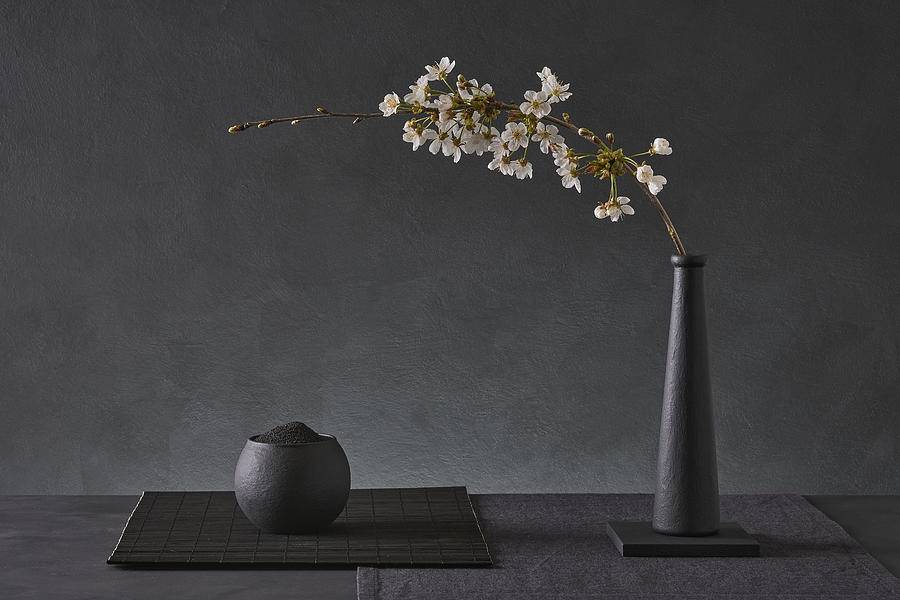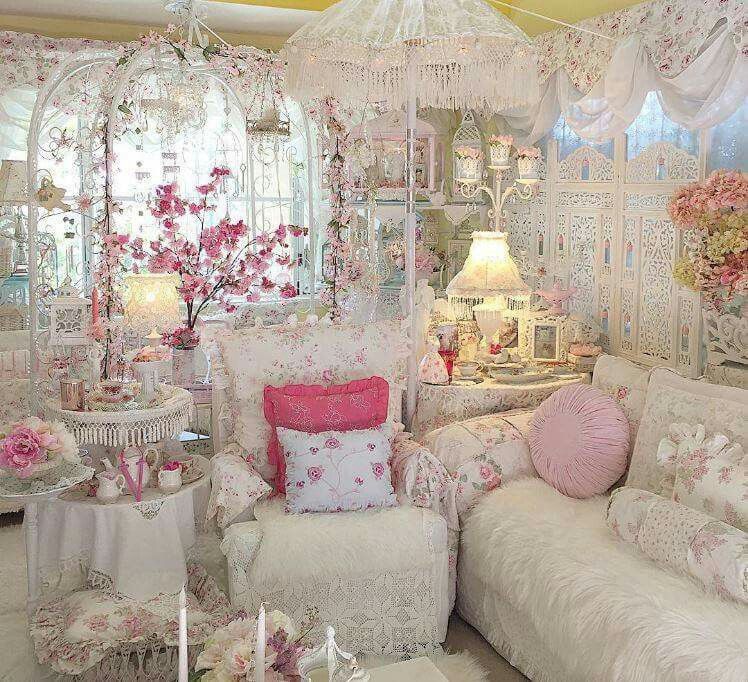In this article, get to know Ikebana, the Japanese art of flower arranging that breathes new life into environments and, of course, people! To give life through a manual and harmonic construction of plants . This is a premise of Ikebana, a style of floral decoration that gained, through the hands of the Japanese, longevity. And the concept is, in addition to being decorative, a guide to meeting you.
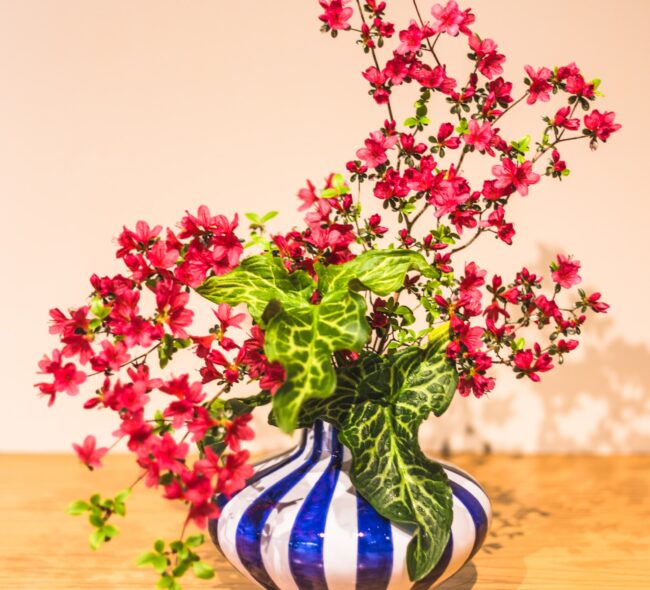
Ikebana makes what is dormant, hidden and repressed within us to blossom, through the path of an art that values harmony
Few flowers, leaves and branches. All of this exudes life and decorates spaces in a unique way, together with a vase that perfectly matches. Ikebana is like that: a minimalist floral arrangement, but which has gained, over time, bold styles.
In this article, you’ll find out all about Ikebana, the school of flower arrangements that brings out harmony, the relationship with plants and a new perspective on life!
1- What is Ikebana?
 Ikebana is an art of floral arrangements whose ideals are to bring out inner harmony, establish greater contact with plants and understand life
Ikebana is an art of floral arrangements whose ideals are to bring out inner harmony, establish greater contact with plants and understand life
Ike means “tidy up”, “fix” or “make alive”. Bana means “flower”. This combination of words gives the context and the concept that sustain Ikebana, forming the flower arrangements that give life to environments and people.
In this Japanese floral art, which started in another country and only later spread and perfected in Japan, the aim is always to revive sensations, relationships and emotions.
Thus, Ikebana is, before a decorative art, a way to understand aspects of nature , to bring out human sensibility and to recognize itself in its essence.
To make what is dormant, hidden and repressed within us to unfold, through the path of an art that values harmony.
In this way, Ikebana works the emotional, creative and human sensory to develop the arrangements. Therefore, it is a form of therapy through contact with plants.
2- What is Ikebana’s story?
 Japanese schools in Ikebana have their own ways of conceiving living decorations, but they follow the same historical principles
Japanese schools in Ikebana have their own ways of conceiving living decorations, but they follow the same historical principles
Ikebana has its origins in India, a country where Hinduism predominates. There, people offered flowers and arrangements to Buddha, as a way of thanking him or as a request for spiritual enlightenment.
But Ikebana was not the way it is today. From India, floral art was disseminated to other countries in the East, such as China and Japan. And it was in the latter that flowers found their greatest “caregivers”.
In Japan, Ikebana gained masters and schools that contributed to the development of flower arrangements as they are today.
3- What are the principles of this Japanese floral art?
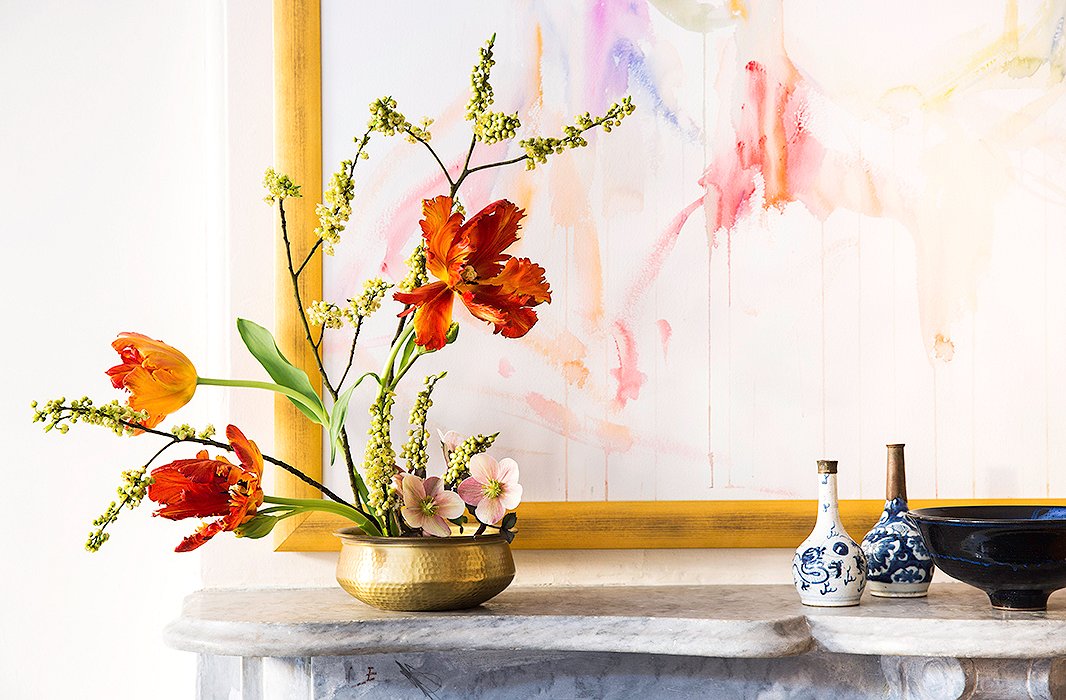
Ikebana has some principles that govern it, whatever the school. They should not be taken as rigid rules, but as ways to achieve the best results in all areas of flower arrangements.
4- CREATE A HARMONIOUS PIECE THINKING ABOUT VOLUME AND DEPTH
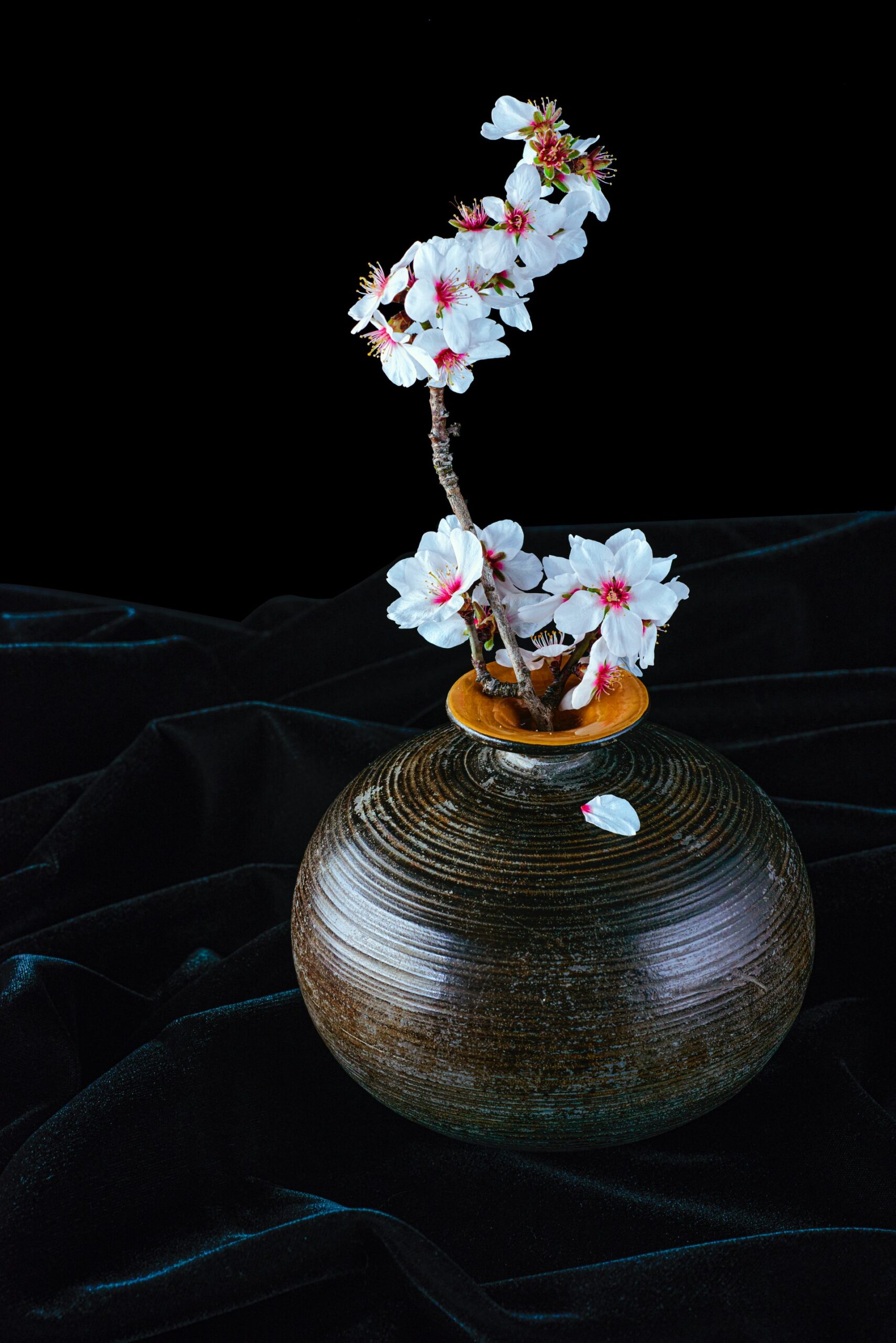 The choice of vessel and dimensions should be an intrinsic part of this game, to get a weighted or maximized effect, according to Ikebana’s style
The choice of vessel and dimensions should be an intrinsic part of this game, to get a weighted or maximized effect, according to Ikebana’s style
Ikebana’s floral arrangements are thought of as living pieces of art. Thus, the size of each flower, leaf and branch must be scaled to create an effect of depth and volume.
5- FOLLOW THE SEASONS
Ikebana is especially fond of using seasonal flowers, leaves and branches. Thus, this art takes its concept of liveliness literally, taking advantage of the period when the plants are more showy.
With this pillar, Ikebana has afoot in sustainability, as it only usesplants that are in abundance. This care when harvesting species, in small quantities and at their best time, preserves nature.
An important aspect when harvesting the species has to do with the flowers. They should not be caught fully opened or closed completely. The ideal point is to harvest them in a middle way, so that your life will be perennial.
6- BRING LIFE AND BEAUTY TO SPACE WITH HARMONY
The place where the Ikebana is placed must have the perfect area for the arrangement to stand out and give life. Thus, it should not get lost in the midst of other arrangements, much less clash with the surroundings.
7- DO NOT TOUCH IKEBANA AFTER IT IS READY
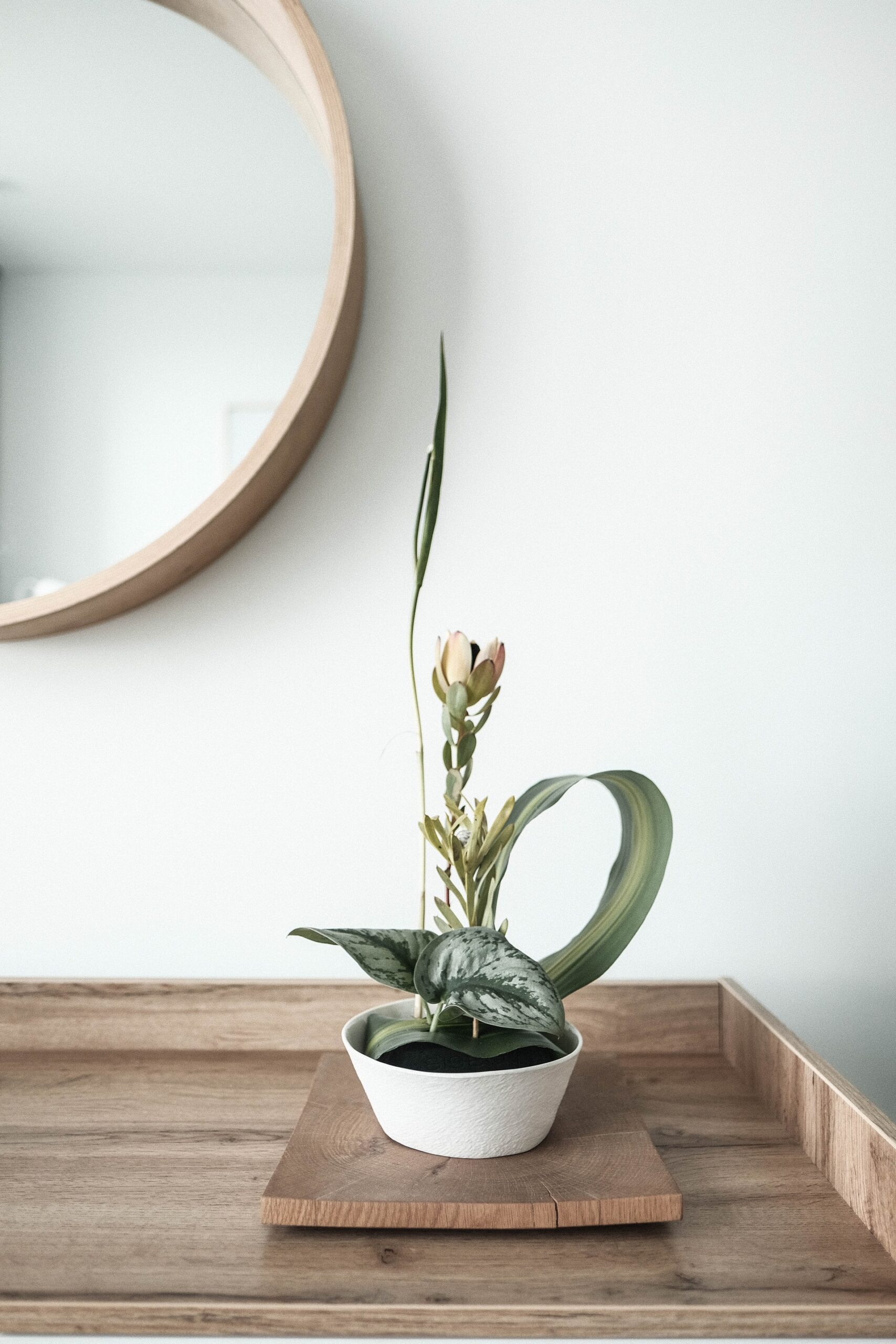 Any interference from the place or angle of the branches and leaves will harm the life cycle of the plants, spoiling the piece and the concept of harmony
Any interference from the place or angle of the branches and leaves will harm the life cycle of the plants, spoiling the piece and the concept of harmony
Once the Ikebana is made, it should not be stirred. This principle shows that the beauty of the arrangement must be natural. The plant itself will adjust during its lifetime in the pot.
8- ALWAYS BE CUT IN WATER
To maintain the appearance and longevity of the floral arrangement, Ikebana teaches how to cut the stems of plants always in water.
This care with the branches causes less “suffering” in the vegetables and helps to keep them healthy for longer.
The choice and cutting of the branch, before being taken to the water, should only be done when the Ikebana will be assembled. Thus, the plants must be immediately enlivened by water.
9- CONNECTING HEAVEN, MAN AND EARTH
The essential principle of Ikebana is to represent and connect, through floral arrangements, the sky, man and Earth.
Thus, the arrangements must constitute a harmony within the format that each person gives to their Ikebana, whatever style it is.
10- MATCH THE VASE TO THE FLORAL ARRANGEMENT
At Ikebana, the vase is considered a piece as important as the other elements that make up the arrangement. Thus, the vase, whether made of porcelain, glass or any other material, must be in harmony with the designed decorative style.
In Japanese culture, ceramics have been used for centuries in household utensils and various arts. Therefore, making an Ikebana with a vase in this raw material is to maintain a cultural heritage and the oriental originality of the arrangement.
11- What are Ikebana styles?
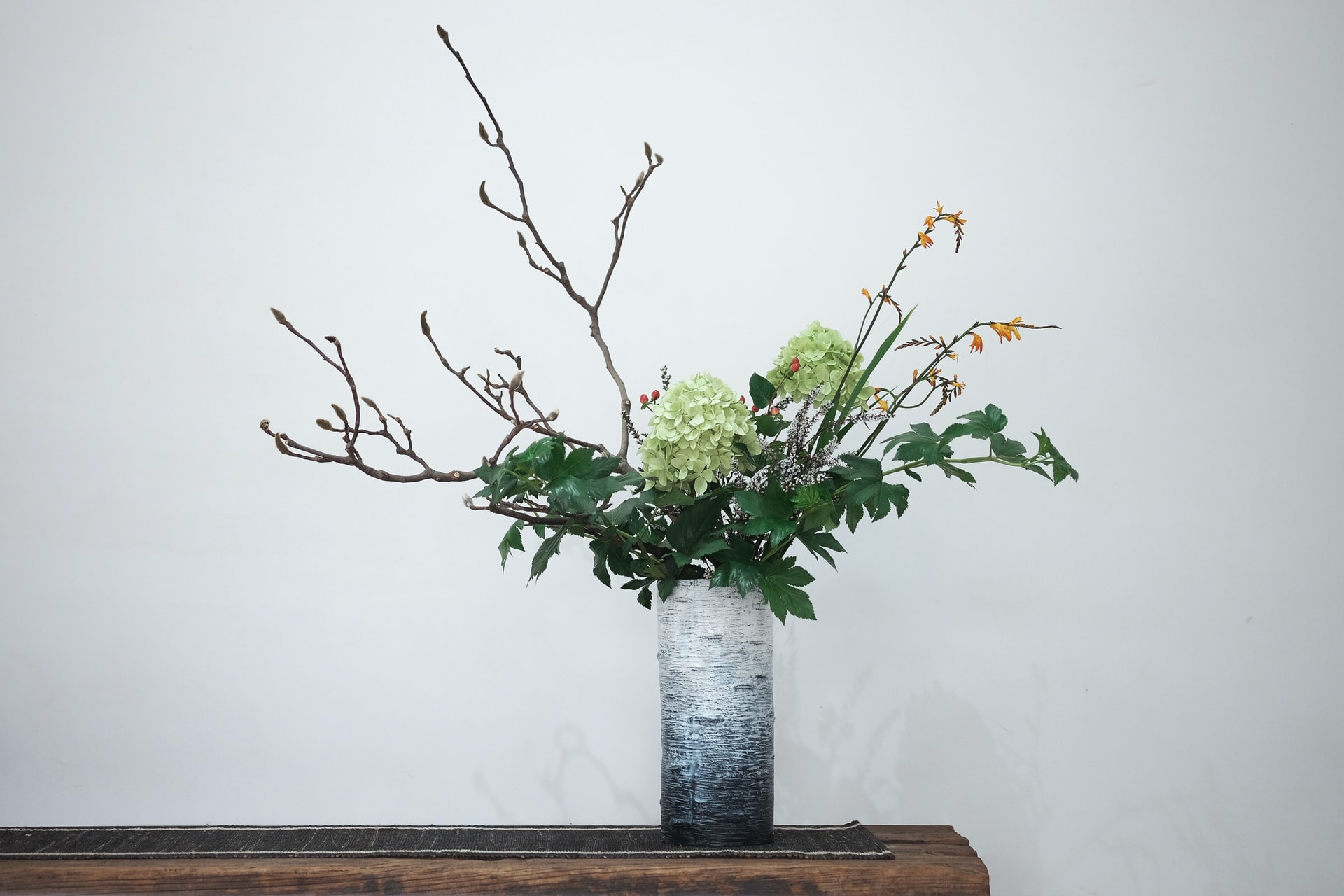 Ikebana branches into several styles that, together, give the concept, body and teachings that this floral art proposes to highlight
Ikebana branches into several styles that, together, give the concept, body and teachings that this floral art proposes to highlight
See the main styles of Ikebana and its characteristics:
- Shoka: brings the concept of the union of heaven, man and Earth through branches strategically arranged in a descending style. The sky always represents the highest part, while man, the middle, and the Earth, the closest to the vessel. Represents constant renewal;
- Sanguetsu: Ikebana develops the most natural concept possible, allowing for rustic arrangements. It exalts the natural beauty of plants, without much interference from man;
- Nageirebana: is a style that demonstrates the fluidity of the arrangements and flowers through assemblies that value delicacy, but without giving up experimentation;
- Rikka: is synonymous with beauty and presence. Used at parties and events, it is based on the fixed use of nine branches, to symbolize the elements of nature;
- Jiuka: conceptualizes the freedom of flowers, with Ikebana being the most authorial among the existing styles, as it allows the creation of arrangements from traditional to modern;
- Sogetsu: includes, in addition to Ikebana traditionalism in its purest form, the use of new materials, such as stones, metals, tree bark, etc;
- Ikebono: is the oldest Ikebana style of all, bringing the worship of the gods as the main reason for the arrangements;
- Ohara: is the style that places flowers, leaves and branches mounted on top of each other, always in a harmonious way;
- Moribana: represents several flowers on top of each other, generating volume and colors in abundance.
12- Which plants to use in Ikebana?
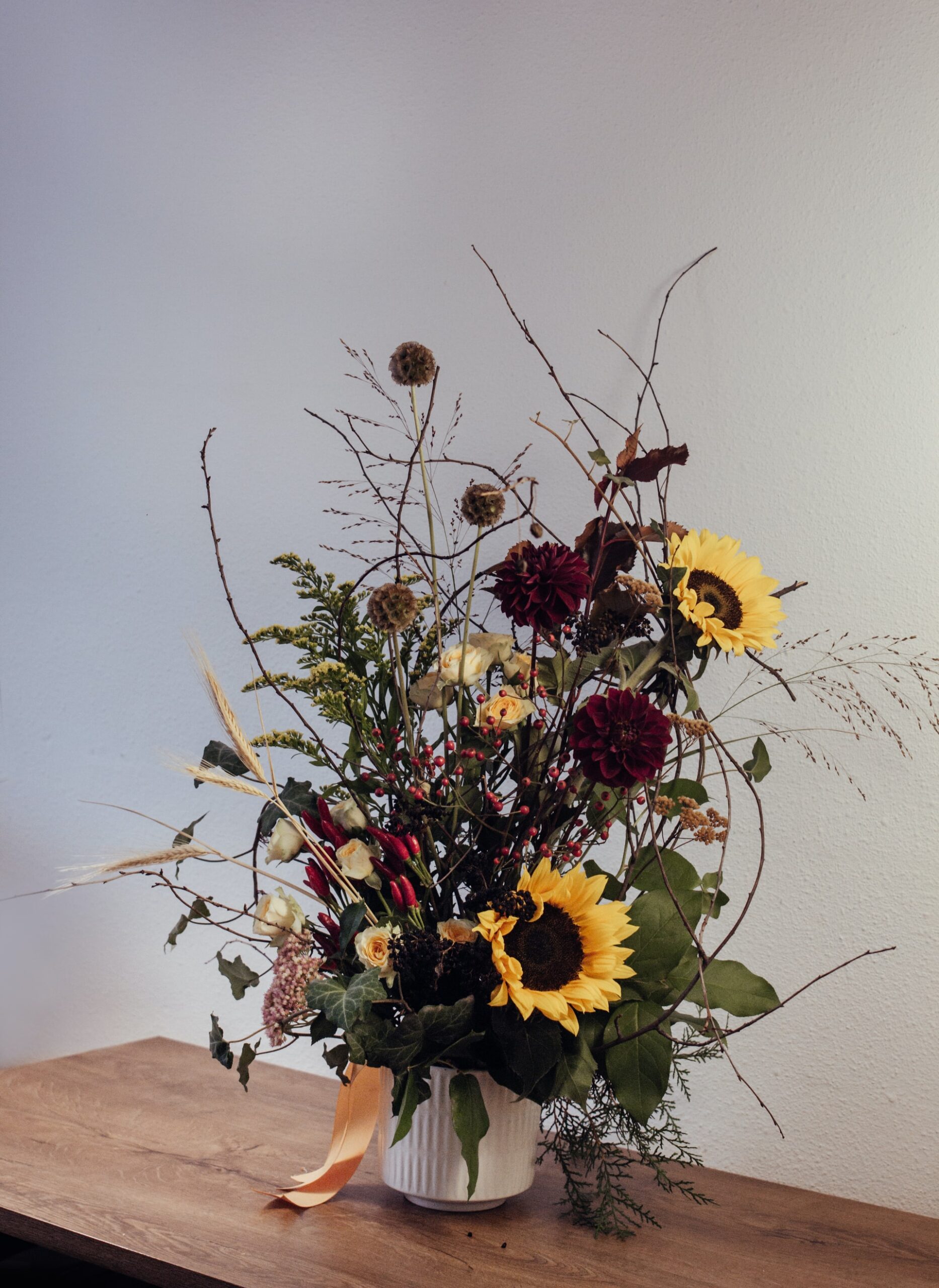 The more you vary in the use of plants, the tendency is for the result to be diversified and high profile
The more you vary in the use of plants, the tendency is for the result to be diversified and high profile
Ikebana is unlimited when it comes to choosing the plants that will be part of an arrangement.
The only tip to follow, in addition to the concept of achieving the desired harmony in this art, is to use the species in their seasonality.
Therefore, your arrangement can be made with orchids, ladies of the night, roses, daisies etc. As for the leaves and branches, they can be of the chosen species or others.
13- How to assemble Ikebana floral arrangements?
Requiring very few items, this floral arrangement follows the premise of minimalism: do more with less and achieve an excellent result.
14- SEPARATE THE MATERIALS
You should get some specific materials to make an Ikebana, as this art dictates.
See the items to create yours:
- iron base with nails: called kenzan ;
- pot: which does not necessarily have to be for plants;
- water: in the amount to fill almost to the edge of the vase;
- branches: starting with just three is ideal, medium, short and long;
- leaves: in increasing volumes and sizes;
- dry moss: to keep the arrangement in water and not let it dry;
- scissors.
15- PUT THE BRANCHES IN THE KENZAN
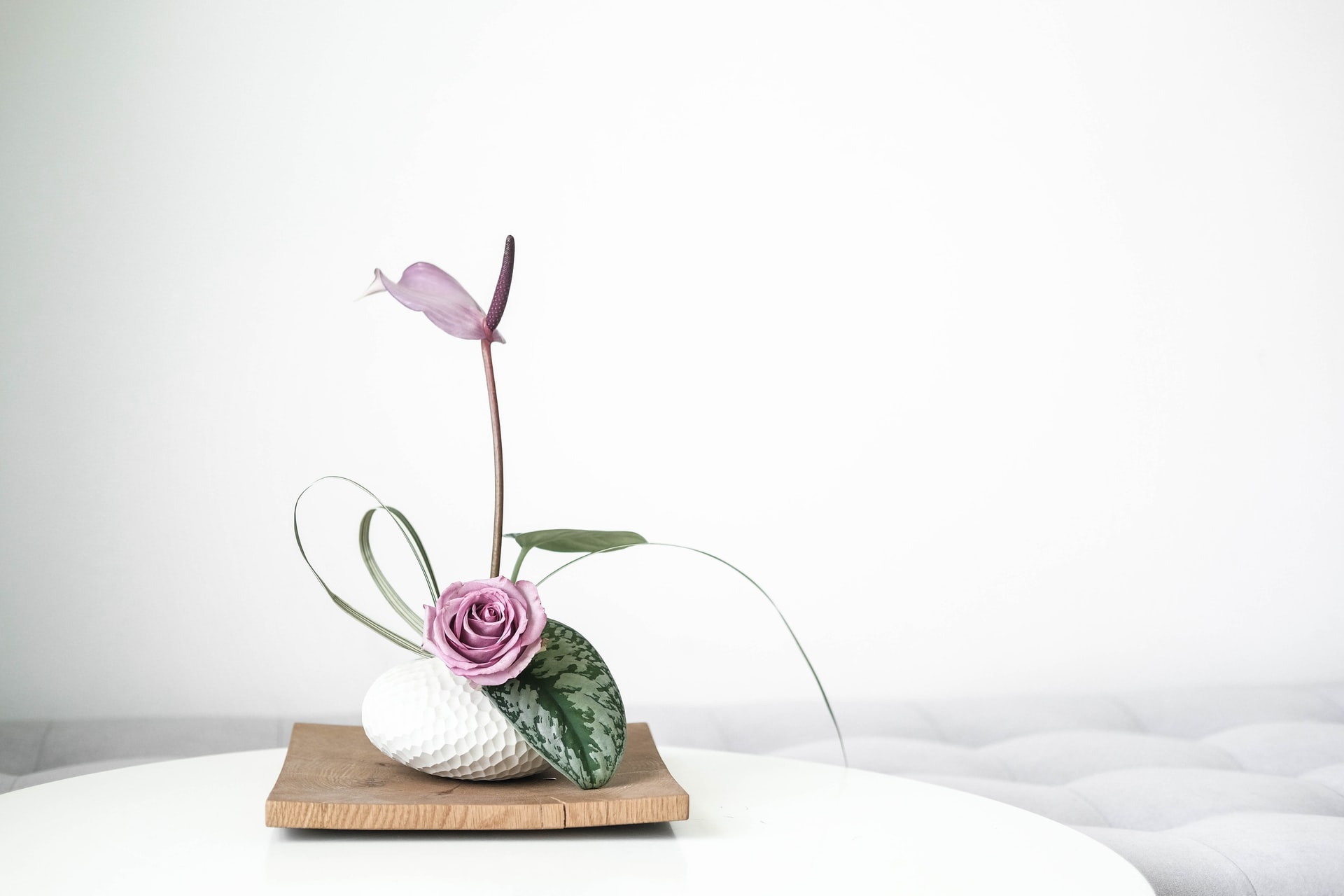 To assemble Ikebana, in any style, the materials will be, for the most part, always the same
To assemble Ikebana, in any style, the materials will be, for the most part, always the same
As Ikebana orders, you should separate flowers, leaves and branches only at the time of assembly. Then place the kenzan in the vase and fill it with water, but not reaching the edge.
16- MOUNT THE ARRANGEMENT ALWAYS UNDERWATER
Next, you must assemble, attaching the branches to the kenzan. Do this with the base of nails in the water and, if you need to cut some branches, use scissors.
There’s no rule on where to start—whether it’s flowers, leaves, or branches—so feel free to create your own way.
17- PUT THE MOSS IN THE KENZAN
After mounting all the branches on the kenzan, place the dry moss on it and squeeze it to secure it. In addition to better conserving your Ikebana, it will hide the piece underwater.
18- How to take care of Ikebana?
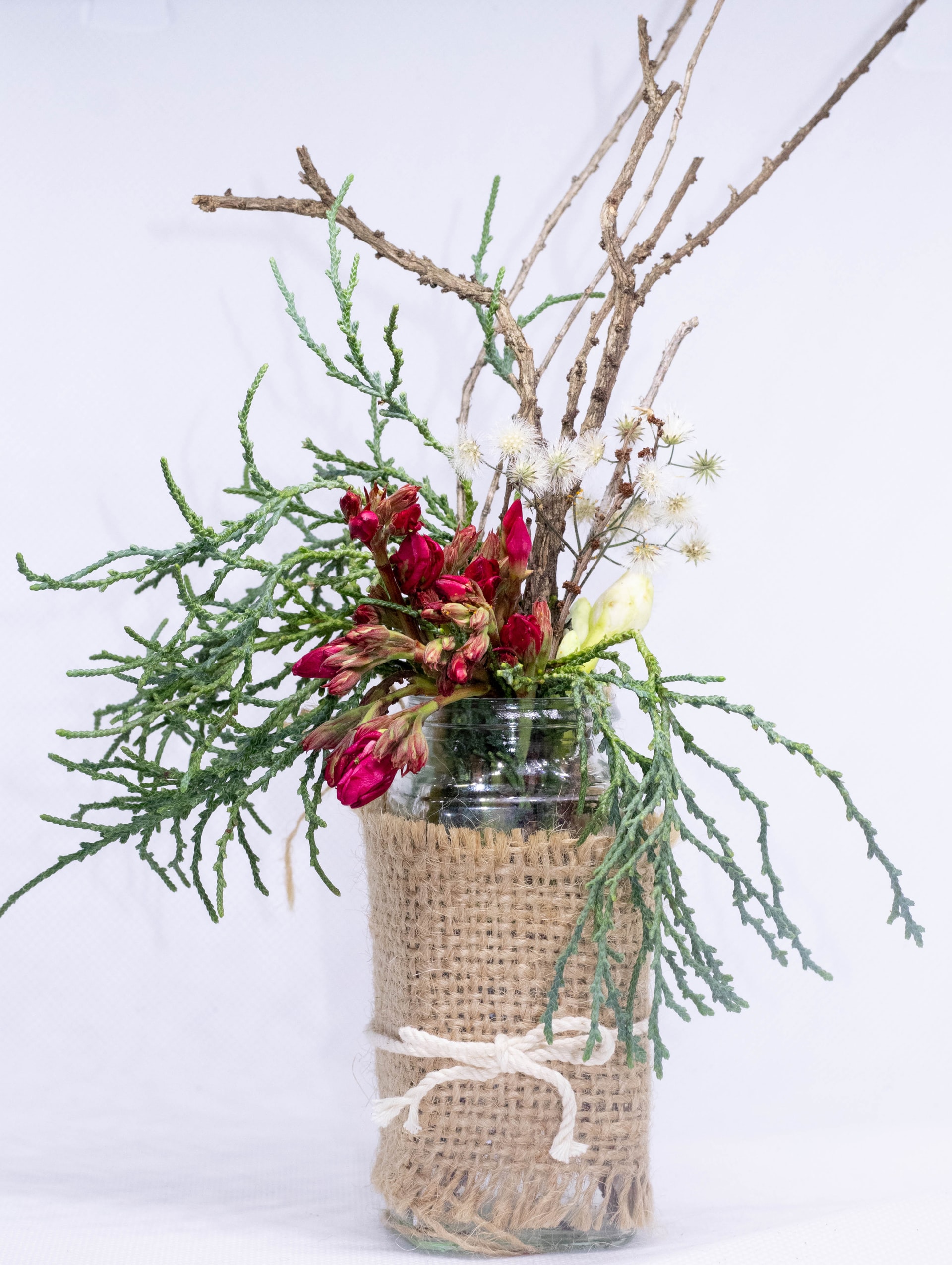
Harmony to be appreciated from beginning to end: not touching anything in the arrangement preserves the best aspect and concept of the piece
Once Ikebana is ready, just let it follow its natural rhythm. This is the only way to take care of your floral arrangement, which does not allow changes in areas or vases, or adjustments in branches. Otherwise, plants will suffer and art will be lost.
With the principles of Ikebana, a good location that stands out and a step-by-step faithful assembly, your arrangement will be harmonious. Consequently, the environment, your daily life and way of being and thinking will also be vivified.

